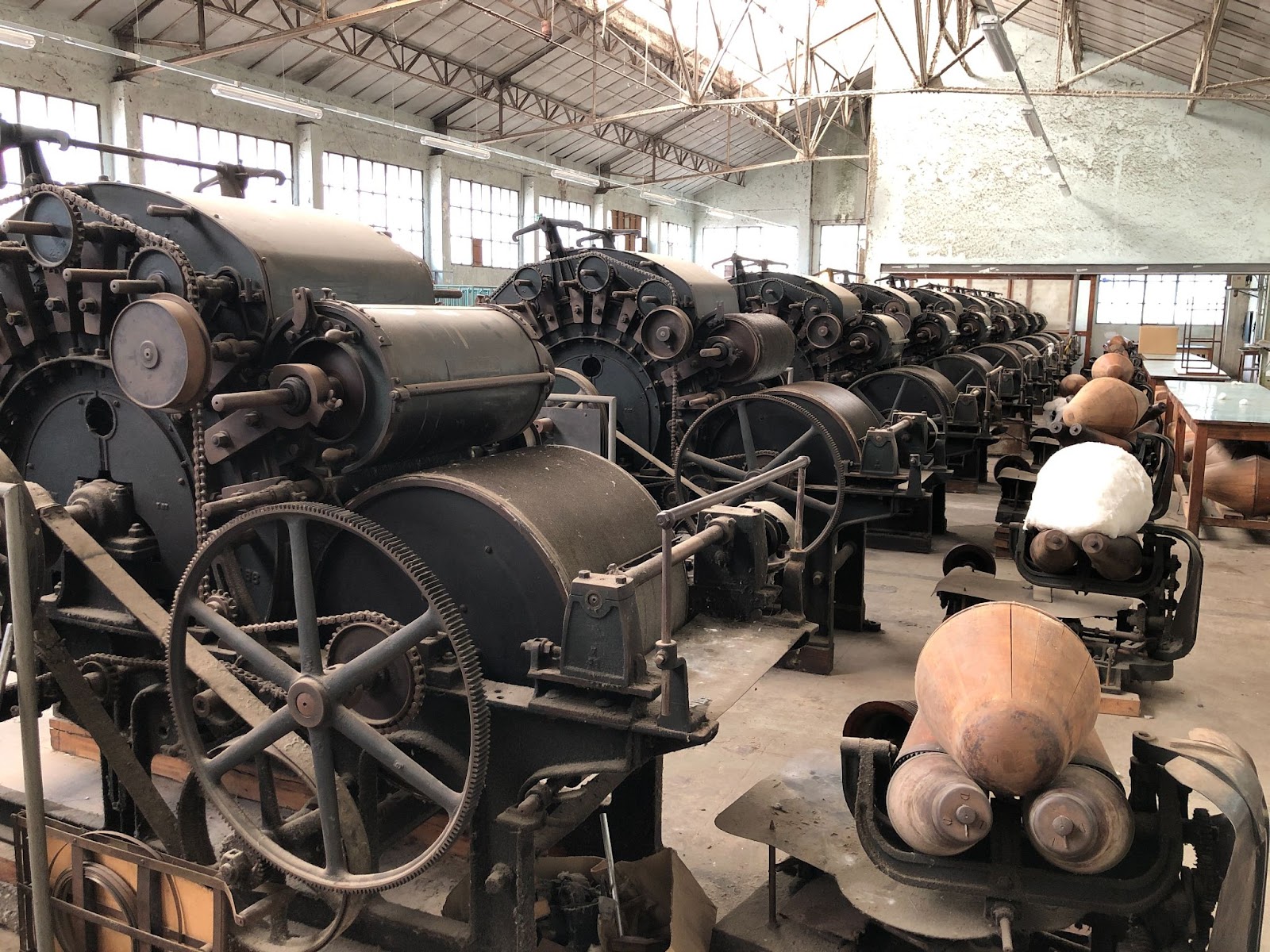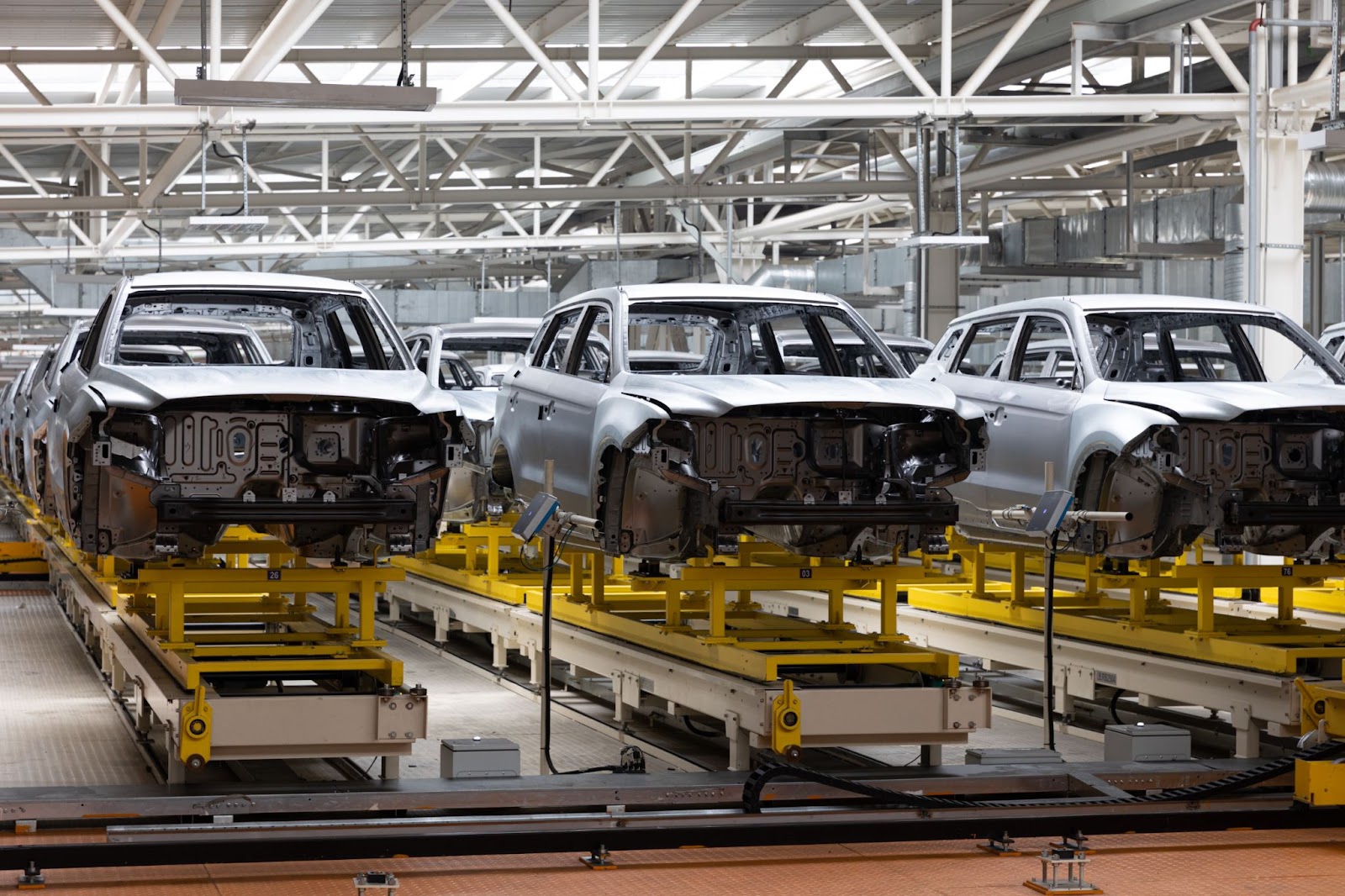Since the late 1700s, the global manufacturing industry has undergone dramatic evolution. This evolution of industry is nothing short of astounding, from the era of hand tools to today’s interconnected machines that “talk” to each other.
- Industry 1.0 marked the shift from hand labour to machines powered by water and steam.
- Industry 2.0 brought electricity, supercharging production capabilities.
- With Industry 3.0, computers entered manufacturing, driving smarter, more automated processes.
- Now, at the dawn of Industry 4.0, the line between the digital and physical worlds blurs, creating smarter, faster, and more interconnected factories than ever.
Let’s break this journey down and uncover the global evolution of industries.
READ ALSO: Top 5 Manufacturing Trends to Look Out For in 2025
Industry 1.0: The Age of Mechanisation (Late 18th Century)

The first major industrial transformation, known as Industry 1.0, dramatically reshaped society. It wasn’t merely a shift in production methods; it changed the very fabric of everyday life.
In this era, hand labour gave way to machines, and the rise of steam power propelled industries forward. Steam technology made it possible to produce goods on a greater scale and revolutionised transportation.
This shift deeply impacted society. Quality of life improved, populations surged, and cities grew rapidly, although not without new social challenges, such as overcrowding.
Ultimately, Industry 1.0 was a catalyst for growth, innovation, and change, setting into motion the industrial forces that continue to shape our modern world.
Industry 2.0: The Era of Mass Production (Late 19th – Early 20th Century)

The second revolution transformed manufacturing in the late 19th and early 20th centuries through the widespread adoption of electricity and assembly line production.
This era marked humanity’s shift from steam power to electrical energy, fundamentally changing how goods were produced and consumed.
Henry Ford’s pioneering assembly line techniques revolutionised manufacturing by breaking complex processes into simple, repeatable tasks performed by specialised workers. This innovation reduced the time it took to build a car from more than 12 hours to one hour and 33 minutes.
This innovation dramatically increased output while reducing costs, making previously luxury items accessible to the average consumer. Electric-powered factories created cleaner, safer working environments than their steam-powered predecessors, while enabling unprecedented production scales.
The resulting economic boom drove rapid urbanisation as workers migrated to industrial centres, reshaping society’s structure. Industry 2.0’s legacy persists in modern manufacturing principles, establishing standardisation and efficiency as cornerstone values that continue to influence production methods.
Industry 3.0: The Digital Revolution (Late 20th Century)

Initiated in the 1970s, Industry 3.0 revolutionised manufacturing by introducing automation through the use of intelligent machines, software, and algorithms. This era marked a pivotal transformation from traditional, mechanised, and analogue processes to digital systems and automated workflows across various industry sectors.
After machines and mass production changed the world, this new era added something even more transformative: advanced technology.
The impact was staggering. Industries evolved, and brand-new sectors like IT and digital startups emerged. Personal computers became household staples, programmable logic controllers automated industrial tasks, and the internet forever altered how humans connect and do business.
Industry 3.0 didn’t just change industry; it changed life itself, making technology a fundamental part of our everyday existence and paving the way for the modern world we know today.
Industry 4.0: Smart Factories and Cyber-Physical Systems (Early 21st Century – Present)

Industry 4.0, commonly referred to as the Fourth Industrial Revolution or 4ir, is the latest phase in the ongoing digital transformation of the manufacturing sector.
The Fourth Industrial Revolution promises to enhance the accessibility and transmission of products and services across the value chain, benefiting businesses, consumers, and stakeholders.
Scaling 4.0 technologies successfully improves supply chain efficiency, increases productivity, reduces manufacturing waste, and benefits employees, stakeholders, and end-users.
READ ALSO: Best Practices in Vendor Risk Management for Manufacturers
The future of industries.
The first three Industrial Revolutions were fueled by transformative innovations—the steam engine, the assembly line, and the computer—which significantly advanced productivity and operations.
These periods are termed “revolutions” because their underlying technologies fundamentally altered the landscape of business and manufacturing. They changed certain aspects of human behaviour and laid the foundation for other innovative solutions.
With AI and machine learning fueling the future of industries, this transformative innovation is poised to bring significant changes and give manufacturers a competitive edge.
The Digital Imperative for African Manufacturing.

Africa is at a critical juncture. There is a common consensus to maximise the continent’s raw materials and export finished or semi-finished products.
Experience is the best teacher, and understanding the global industrial revolution can provide reasonable context as we build African industries. However, rather than simply replicating the industrialisation paths of developed nations, the continent can leverage its unique context and resources to forge a distinctive path forward.
Africa can bypass older, less efficient processes and directly implement cutting-edge digital solutions, just as the continent did with mobile telecommunications. Embracing digital technologies can help African economies diversify beyond raw material exports toward higher-value manufacturing and services, fostering economic resilience.
Opportunities for Africa’s Industrial Growth
For African manufacturers, embracing digital technology is no longer optional but essential for survival and growth in the global marketplace. Digital technologies enable:
- Enhanced competitiveness through improved efficiency and higher-quality production
- Data-driven decision making based on real-time operational insights
- Improved supply chain management with greater visibility and coordination
- Increased production flexibility to meet diverse customer needs
- Access to global markets and valuable information for innovation
Digitalisation enables African businesses to leverage innovative business models, access new markets, and integrate more effectively into global value chains. With digitisation, the continent’s abundant renewable energy resources, youthful population, and increasing digital connectivity provide competitive advantages for African countries in the global industrial landscape.
Matta: Driving Africa’s Digital Industrial Transformation
At Matta, we understand the critical role that technology has played in the evolution of industries. As African industries evolve, we are building digital solutions that support manufacturing processes and help industries scale.
Matta’s digital platform connects African businesses with verified suppliers worldwide, streamlining procurement processes, ensuring quality standards, and building trust through transparency.
This digital approach perfectly aligns with Industry 4.0 principles by leveraging technology to optimise supply chains and enable data-driven decision-making.
By digitalising the procurement of chemicals, raw materials, ingredients, and commodities, we address one of the fundamental challenges facing African manufacturers.
The time for Africa to fully participate in and shape the Fourth Industrial Revolution is now. By strategically adopting digital technologies and platforms like Matta, African manufacturers can unlock the continent’s immense potential, drive economic growth, and establish Africa as a significant player in the global industrial landscape.
Sign up on Matta
In a world with shortening attention spans, you took the time to read this article. Thank you.



